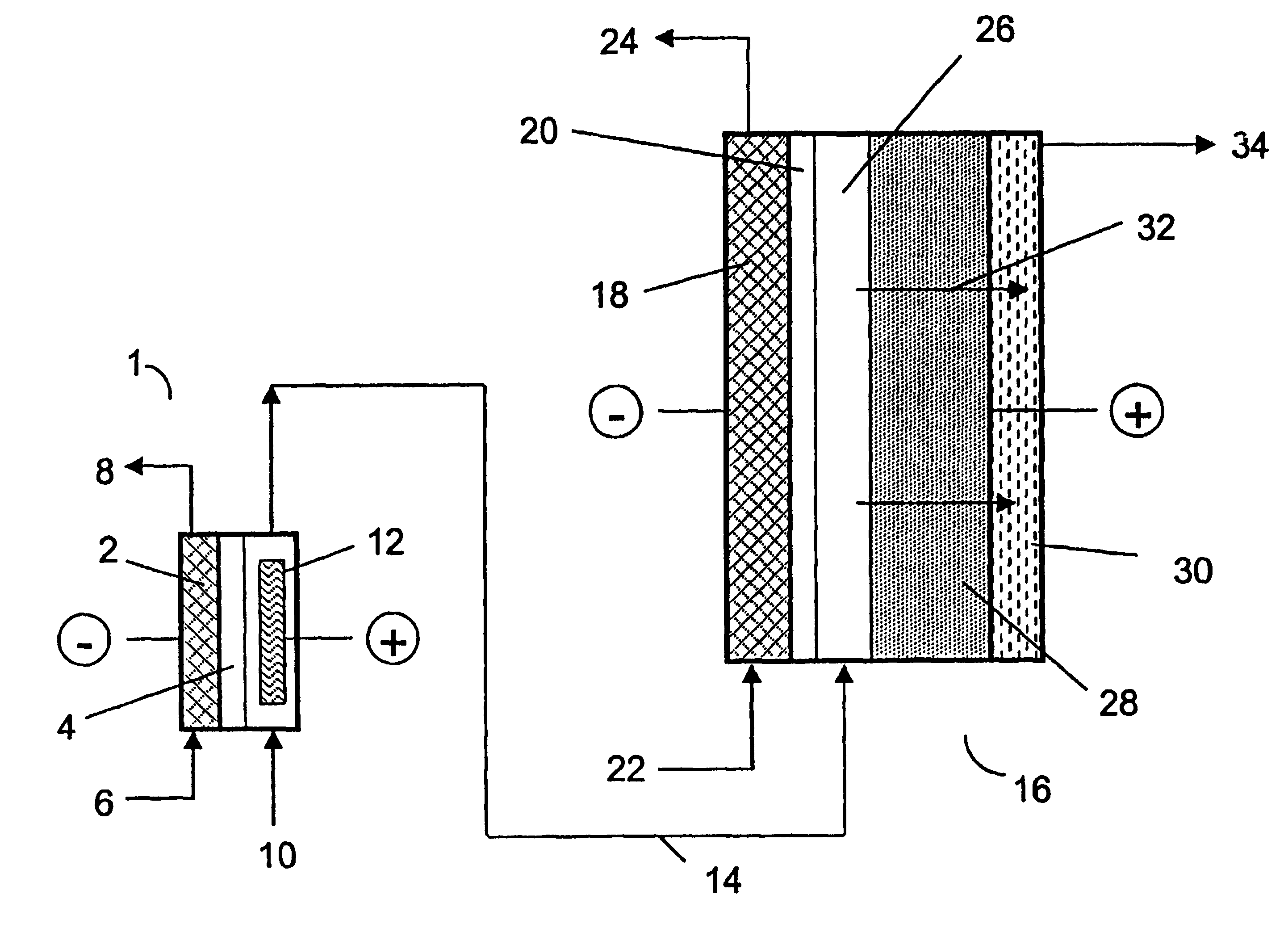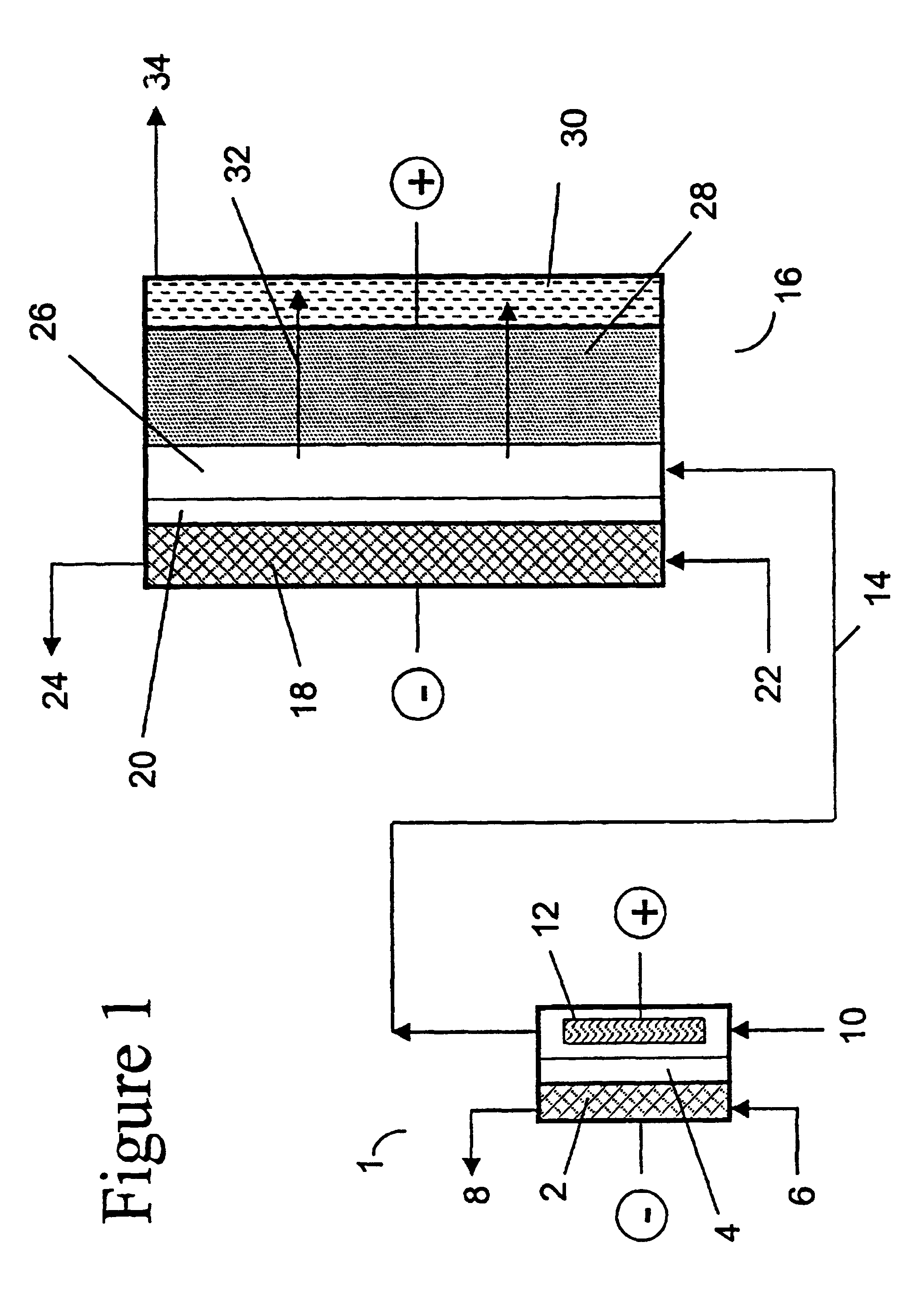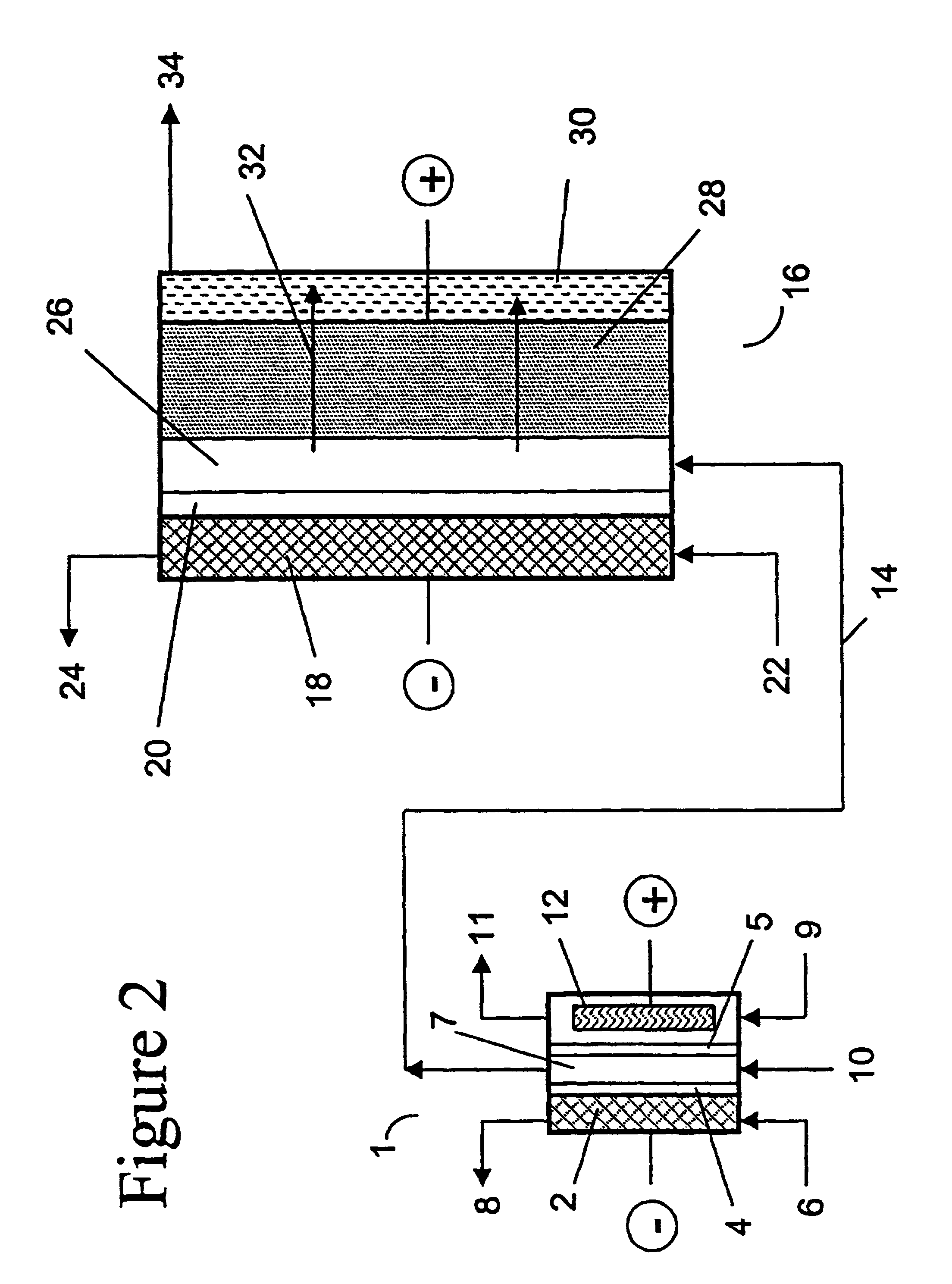Electrolytic process for producing chlorine dioxide
a technology of electrolysis and chlorine dioxide, which is applied in the direction of electrolysis process, electrolysis components, cells, etc., can solve the problems of preventing its use in many applications, and achieve the effect of improving the conversion efficiency per pass
- Summary
- Abstract
- Description
- Claims
- Application Information
AI Technical Summary
Benefits of technology
Problems solved by technology
Method used
Image
Examples
Embodiment Construction
two-compartment electrochemical oxidation cell utilizing a zero gap anode and cathode design of the type denoted as 40 in FIG. 3 was employed to oxidize a sodium chlorite / sodium chloride mixture (the concentrations of NaClO.sub.2 and NaCl were 9.74 gpL and 10.0 gpL, respectively) in a single pass through the zero gap anode / cathode design electrolyzer. The projected membrane or electrode surface area was 232 cm.sup.2. The high surface area anode was manufactured from TySAR.RTM. WEP-12 material supplied by Olin Corporation. The anolyte flow rate was 30 ml / min.
The cathode compartment of the oxidizer was fed with 0.05 N NaOH at a flow rate of 20 ml / min. A current density of 0.25 kA / m.sup.2 was applied to the cell, resulting in a cell voltage of 3.4 V. In an experimental run involving pre-acidification of the chlorite feed to a pH of 2.65, the product stream contained 6.75 gpL ClO.sub.2, 0.66 gpL NaClO.sub.3 as well as 0.08 gpl unreacted NaClO.sub.2. Based on the product stream compositi...
PUM
 Login to View More
Login to View More Abstract
Description
Claims
Application Information
 Login to View More
Login to View More - R&D
- Intellectual Property
- Life Sciences
- Materials
- Tech Scout
- Unparalleled Data Quality
- Higher Quality Content
- 60% Fewer Hallucinations
Browse by: Latest US Patents, China's latest patents, Technical Efficacy Thesaurus, Application Domain, Technology Topic, Popular Technical Reports.
© 2025 PatSnap. All rights reserved.Legal|Privacy policy|Modern Slavery Act Transparency Statement|Sitemap|About US| Contact US: help@patsnap.com



